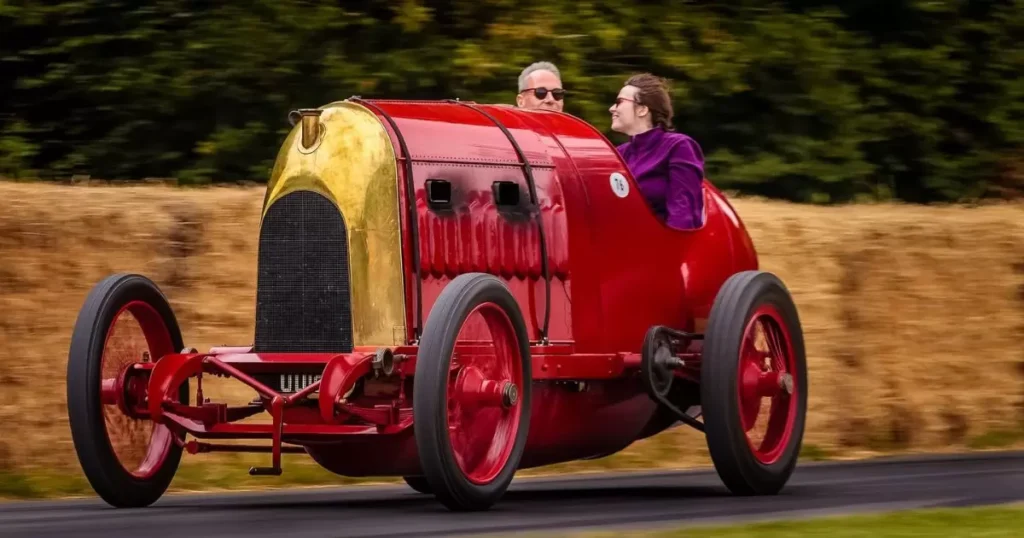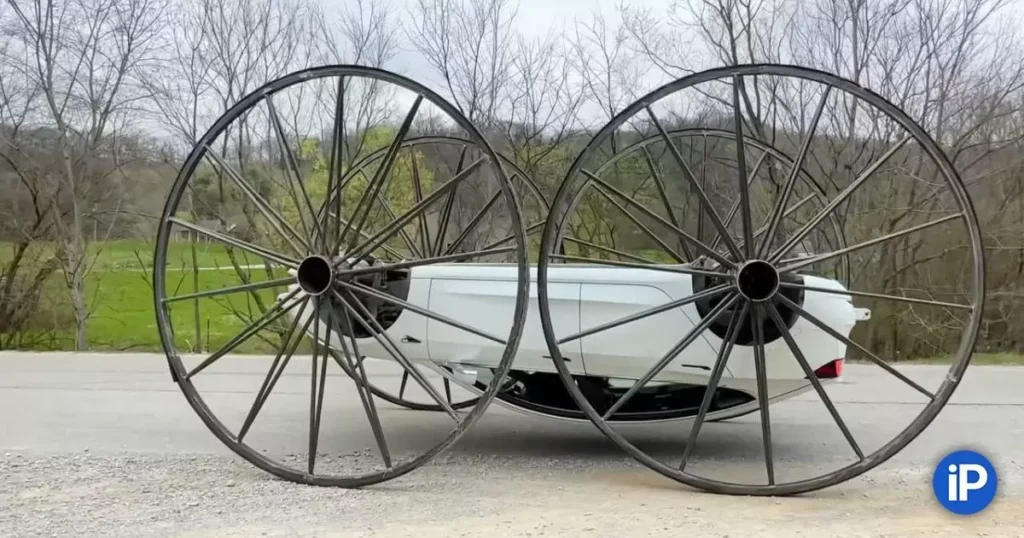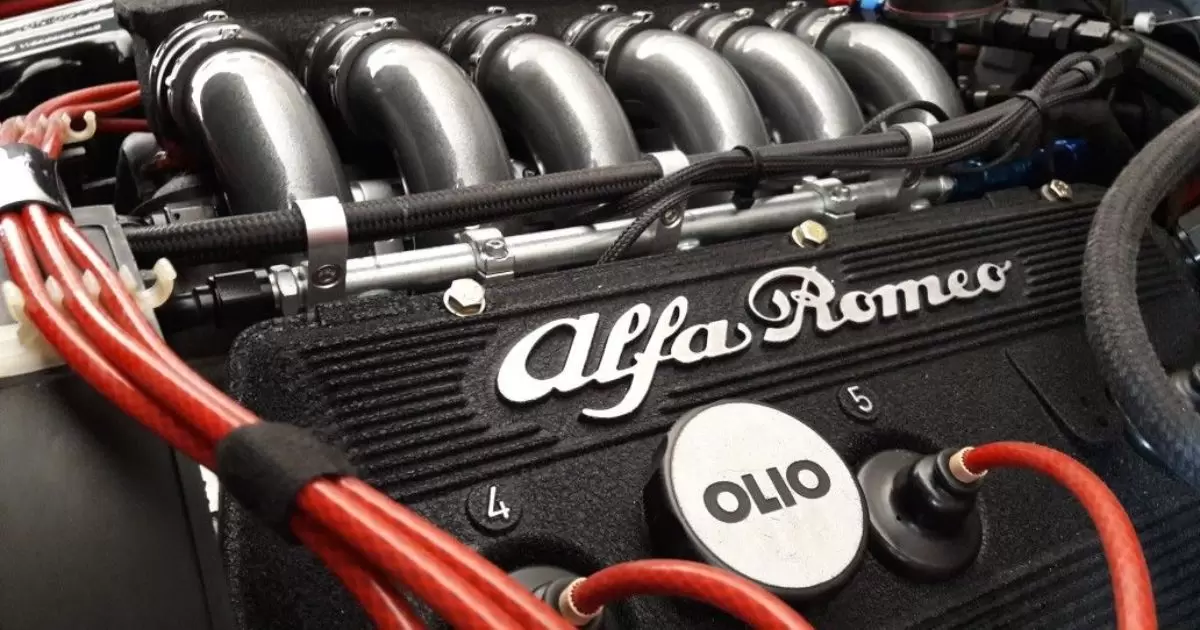Introduction
“Mighty Motors – The Most Powerful Engines in Auto History” highlights the most iconic and powerful engines.
Engines are the heart of any vehicle, and throughout history, automotive engineers have pushed the boundaries to create more powerful and efficient engines. From the early days of monstrous behemoths to the modern marvels of engineering.
These engines represent the pinnacle of automotive technology. This article explores some of the most powerful and iconic engines in auto history, highlighting their unique features, performance capabilities, and the impact they have had on the automotive world.
The Beast of Turin – Fiat S76’s 28.5-Litre Engine

The Fiat S76, known as the “Beast of Turin,” is a legendary car from the early 20th century. Its massive 28.5-litre engine was designed for one purpose: to break speed records. Producing an astonishing 300 horsepower, this engine was a marvel of its time, showcasing the sheer power and audacity of early automotive engineering.
The Fiat S76’s engine is not only impressive for its size and power but also for its historical significance. Built in 1910, this engine set the stage for future high-performance engines. Despite its age, the Beast of Turin remains a symbol of raw power and engineering prowess.
American Muscle – The 426 Hemi from Chrysler
The 426 Hemi engine from Chrysler is an icon of American muscle cars. Introduced in the 1960s, this engine became famous for its performance in both street and racing applications.
With a displacement of 7.0 litres and hemispherical combustion chambers, the 426 Hemi produced over 425 horsepower, making it one of the most powerful engines of its era.
The 426 Hemi’s impact on the automotive world cannot be overstated. It powered legendary cars like the Dodge Charger and Plymouth Barracuda, cementing its place in automotive history. Even today, the 426 Hemi is revered by car enthusiasts and collectors for its power and performance.
The Supercar Standard – Ferrari F140 Engine
Ferrari’s F140 engine is a benchmark in the world of supercars. This 6.5-litre V12 engine, found in models like the Ferrari Enzo and LaFerrari, delivers an astounding 789 horsepower. Known for its high-revving nature and distinctive sound, the F140 engine is a true masterpiece of engineering.
The F140 engine represents Ferrari’s commitment to performance and innovation. Its advanced technology and exceptional power output have set new standards for supercar engines, inspiring competitors and thrilling drivers worldwide.
An Engineering Marvel – Bugatti’s Quad-Turbocharged W16

Bugatti’s quad-turbocharged W16 engine is an engineering marvel that powers the world-famous Veyron and Chiron supercars. With a displacement of 8.0 litres and four turbochargers, this engine produces an incredible 1,479 horsepower, enabling top speeds of over 260 mph.
The W16 engine’s design is a testament to Bugatti’s dedication to pushing the limits of automotive performance. Its complex engineering and immense power make it one of the most impressive engines ever created, showcasing what is possible when engineering meets ambition.
The Heart of a Legend – Lamborghini’s V12
Lamborghini’s V12 engine has been the heart of the brand’s flagship models for decades. First introduced in the 1960s, this engine has evolved over the years, with the latest iteration producing over 770 horsepower in the Lamborghini Aventador SVJ.
The V12 engine embodies Lamborghini’s philosophy of uncompromising performance and excitement. Its distinctive sound and breathtaking power delivery have made it a legend in the world of high-performance cars, inspiring countless enthusiasts and aspiring supercar owners.
The Power of Innovation with Koenigsegg’s Twin-Turbocharged V8
Koenigsegg’s twin-turbocharged V8 engine is a prime example of innovation in automotive engineering. Found in models like the Agera RS and Jesko, this 5.0-litre engine produces up to 1,600 horsepower, making it one of the most powerful production engines in the world.
The twin-turbocharged V8 showcases Koenigsegg’s commitment to pushing the boundaries of performance and efficiency. Its lightweight design and advanced technology allow for unparalleled power and agility, setting new benchmarks in the hypercar segment.
Peak Performance – The Devel Sixteen’s 12.3-Litre V16 Engine
The Devel Sixteen’s 12.3-litre V16 engine is a testament to the pursuit of peak performance. This monstrous engine, producing up to 5,007 horsepower, is designed to push the limits of what is possible in a road-going vehicle.
The V16 engine represents a bold vision of the future of high-performance cars. Its sheer size and power are unmatched, making it a symbol of extreme engineering and ambition in the automotive world.
McLaren’s M838T Engine

McLaren’s M838T engine is a twin-turbocharged V8 found in models like the 650S and 720S. This 3.8-litre engine produces up to 710 horsepower, delivering blistering performance and agility.
The M838T engine is a key component of McLaren’s success in the supercar market. Its combination of power, efficiency, and responsiveness has made McLaren a formidable competitor, showcasing the brand’s engineering excellence and racing heritage.
The Iconic Inline-Six – Toyota 2JZ-GTE Engine
The Toyota 2JZ-GTE engine is an iconic inline-six that has gained legendary status among car enthusiasts. Found in the Toyota Supra, this 3.0-litre engine is known for its durability and tunability, capable of producing over 1,000 horsepower with aftermarket modifications.
The 2JZ-GTE’s reputation for reliability and performance has made it a favorite in the tuning community. Its robust design and potential for high power outputs have cemented its place in automotive history as one of the greatest engines ever built.
The Thunderous Wankel – Mazda’s 13B-REW Rotary Engine
Mazda’s 13B-REW rotary engine is a unique and innovative powerplant found in the RX-7 sports car. This 1.3-litre engine, with its compact design and high-revving nature, produces up to 276 horsepower, delivering a distinctive driving experience.
The 13B-REW engine represents Mazda’s commitment to unconventional engineering solutions. Its rotary design sets it apart from traditional piston engines, offering a different approach to performance and efficiency that has captivated car enthusiasts for decades.
The Classic V8 – Chevrolet’s LS7 Engine
Chevrolet’s LS7 engine is a classic V8 that has powered iconic models like the Corvette Z06. This 7.0-litre engine produces 505 horsepower, combining traditional American muscle with modern engineering advancements.
The LS7 engine is celebrated for its blend of power, reliability, and simplicity. Its naturally aspirated design delivers a raw and engaging driving experience, making it a beloved choice among muscle car and sports car enthusiasts.
Bonus: The Green Giant (Tesla’s Tri-Motor Powertrain)

Tesla’s tri-motor powertrain represents the future of high-performance electric vehicles. Found in the Model S Plaid, this setup delivers over 1,000 horsepower, enabling acceleration from 0 to 60 mph in under 2 seconds.
The tri-motor powertrain showcases Tesla’s leadership in electric vehicle technology. Its impressive performance capabilities and efficiency highlight the potential of electric powertrains to rival and even surpass traditional internal combustion engines in the realm of high-performance vehicles.
Additional Tips
- Learn the Basics: Familiarize yourself with engine types and how they work.
- Study Innovations: Research the technological advancements that have shaped engine design.
- Explore History: Understand the historical context behind each engine’s development.
- Compare Performances: Look at performance metrics like horsepower, torque, and efficiency.
- Check Out Videos: Watch videos and documentaries about these engines in action.
- Visit Car Shows: Attend car shows or museums to see these engines up close.
- Read Reviews: Read reviews and articles from automotive experts for deeper insights.
- Join Forums: Participate in online forums and communities dedicated to car enthusiasts.
- Follow Trends: Keep up with the latest trends and developments in automotive engineering.
- Experience First-Hand: If possible, test drive cars equipped with these powerful engines to feel the performance yourself.
Aston Martin Valour: A Tribute to 110 Years of Automotive Excellence
Pros and Cons
| Pros | Cons |
| High Performance: Deliver exceptional speed and power. | Fuel Consumption: Tend to consume more fuel. |
| Technological Innovation: Showcase cutting-edge engineering. | Maintenance Costs: Can be expensive to maintain. |
| Historical Significance: Represent important milestones in automotive history. | Environmental Impact: Often have higher emissions. |
| Collector’s Value: Highly valued by car enthusiasts and collectors. | Complexity: More complex systems can lead to higher repair costs. |
| Driving Experience: Provide an exhilarating and unique driving experience. | Initial Cost: Typically come with a higher purchase price. |
Answers to Key Questions.
What makes the Fiat S76’s engine unique?
The Fiat S76’s 28.5-litre engine, known as the “Beast of Turin,” is unique for its sheer size and power, producing 300 horsepower in 1910, setting the stage for future high-performance engines.
Why is the 426 Hemi engine significant in American muscle cars?
The 426 Hemi engine from Chrysler, with its 7.0-litre displacement and over 425 horsepower, powered iconic muscle cars like the Dodge Charger and Plymouth Barracuda, cementing its place in automotive history.
What sets Ferrari’s F140 engine apart from other supercar engines?
Ferrari’s F140 engine, a 6.5-litre V12 producing 789 horsepower, is renowned for its high-revving nature, distinctive sound, and advanced engineering, setting new standards for supercar performance.
How does Bugatti’s quad-turbocharged W16 engine achieve its incredible power?
Bugatti’s quad-turbocharged W16 engine, with an 8.0-litre displacement and four turbochargers, produces 1,479 horsepower, enabling top speeds over 260 mph, showcasing Bugatti’s dedication to pushing automotive performance limits.
What is the significance of the Toyota 2JZ-GTE engine in the tuning community?
The Toyota 2JZ-GTE engine, a 3.0-litre inline-six, is celebrated for its durability and tunability, capable of producing over 1,000 horsepower with modifications, making it a favorite among car enthusiasts.
How does Tesla’s tri-motor powertrain compare to traditional engines?
Tesla’s tri-motor powertrain, delivering over 1,000 horsepower, showcases the potential of electric vehicles to rival and surpass traditional internal combustion engines in performance and efficiency.
Conclusion
The engines highlighted in this article represent some of the most powerful and influential power plants in automotive history.
From the early days of the Fiat S76 to the cutting-edge technology of Tesla’s tri-motor powertrain, these engines have pushed the boundaries of what is possible in terms of performance and engineering.
Each engine tells a story of innovation, ambition, and a relentless pursuit of excellence. As we look to the future, these mighty motors will continue to inspire and drive the evolution of automotive technology.

Hi! I’m Sophia Bennet, the author of drivecarspedia.com. I share my passion for cars through helpful tips, reviews, and easy-to-understand information. Join me as we explore the exciting world of automobiles together!








